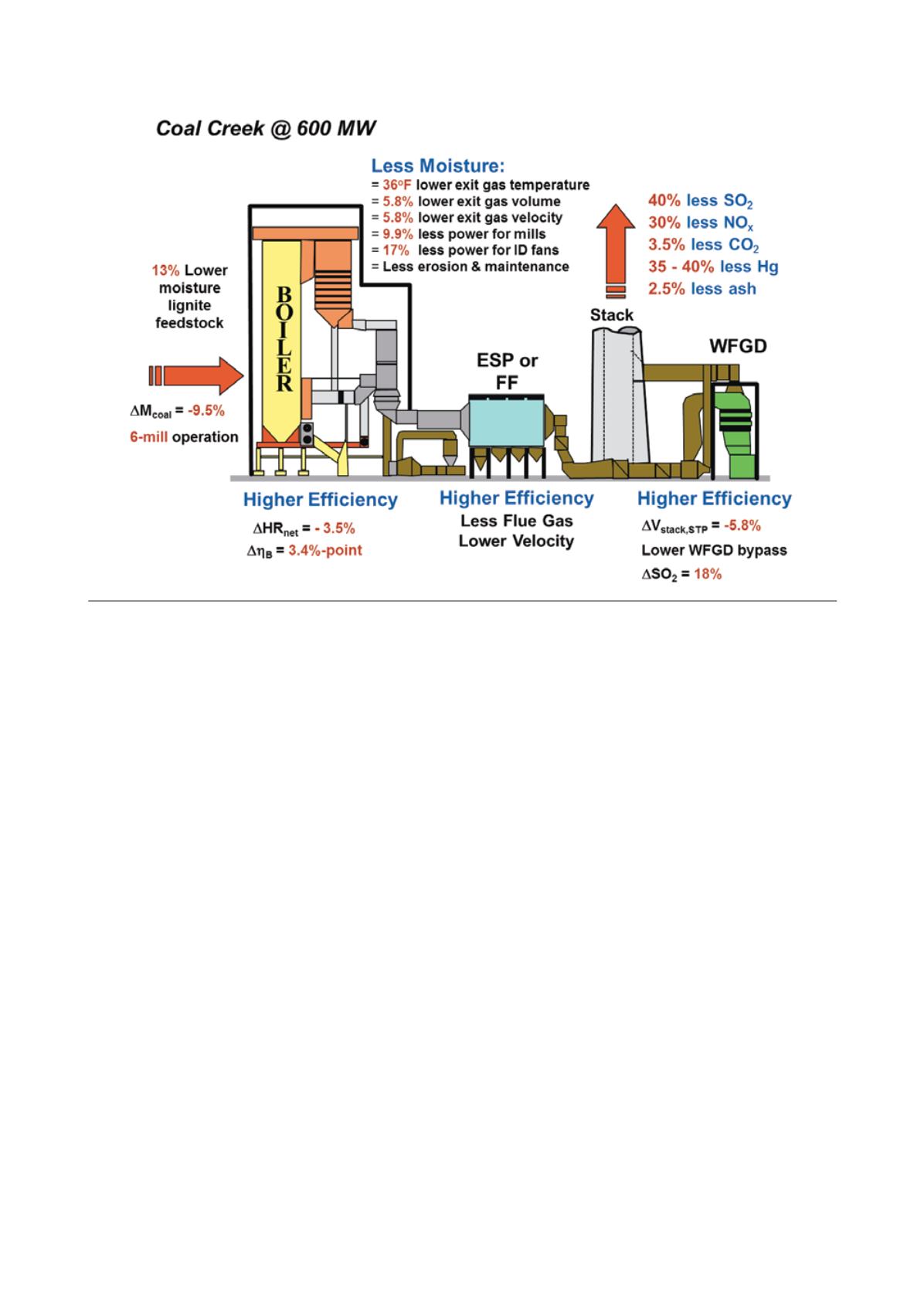
of high-moisture low-quality coals
are developing coal dewatering and
drying processes. This is particularly
important for pulverised coal
technology operating at high steam
parameters. However, many thermal
processes developed thus far are
either mechanically complex or
require costly primary energy or
steam to remove moisture from the
coal.
A novel low-temperature
coal-drying and -cleaning process,
employing a moving-bed fluidised
bed dryer (FBD) and using waste
heat to decrease moisture content of
low-rank coals, was developed and
commercialised by Great River
Energy (GRE) at its Coal Creek
power plant (comprising two
600 MW units). The technology is
commercially available as the
DryFining Fuel Enhancement Process
(DryFining™).
The DryFining Fuel
Enhancement Process
The heart of the DryFining system is
a two-stage FBD, which accomplishes
two important functions: it cleans the
coal by removing a significant
portion of the sulfur and mercury
from the raw coal in the first stage;
and dries the coal in the second
stage. The cleaning function,
accomplished by gravitational
segregation in a fluidised bed,
distinguishes this coal-drying
technology and provides a very
important co-benefit of emissions
reduction.
A moving-bed FBD was selected
for the DryFining process due to its
high heat and mass transfer
coefficients, which produce a
compact dryer design. Air is
employed as a fluidisation medium
instead of the commonly used
steam.
1
Potential devolatisation of
coal during the drying process is
avoided by drying with plant
low-grade waste heat.
Crushed coal is fed to the first
FBD stage, where non-fluidisable
material and higher-density fractions
are segregated at the bottom of the
dryer and discharged, while
less-dense and smaller particles float.
Therefore, the segregated stream
discharged from the dryer has higher
mineral matter content (including
pyrite) in comparison to the dried
coal (product stream). Because most
of the inorganically associated sulfur
is contained in pyrite forms, in the
case of North Dakota lignite, about
30% of the sulfur and mercury (Hg)
from coal are segregated out in the
first stage of the FBD. Tests
performed with other lignites and
sub-bituminous coals have
demonstrated similar levels of sulfur
and mercury removal.
The fluidisable material next
enters the second stage of the dryer,
where the surface and inherent coal
moisture are evaporated in the heat
supplied by the fluidising air and
the in-bed heat exchanger. The
in-bed heat exchanger increases the
temperature of the fluidising
(drying) air and fluidised coalbed,
improving drying kinetics. The
drying process affects the
microstructure of coal particles that
disintegrate during drying. The
drier and finer coal is discharged
from the FBD as the product stream.
The bed residence time and
temperature are the main
Figure 1. Effects of DryFining at Coal Creek.
66
|
World Coal
|
July 2015


